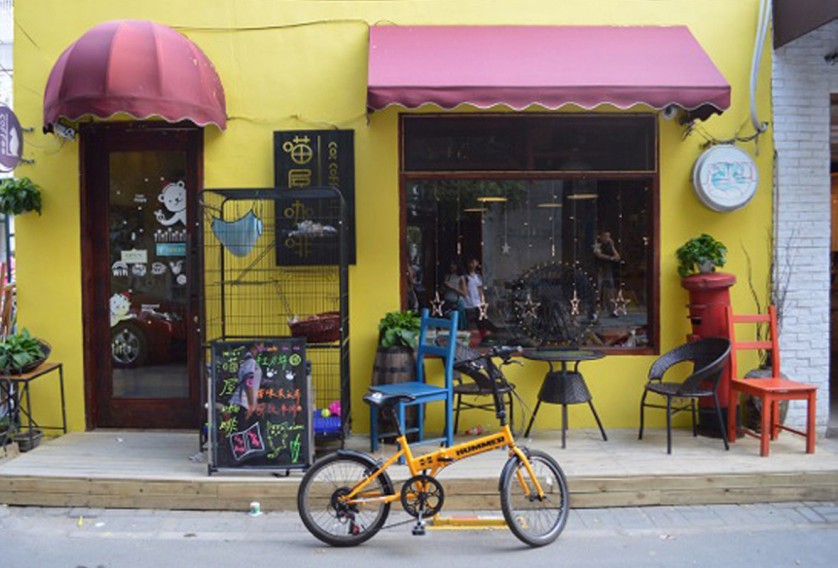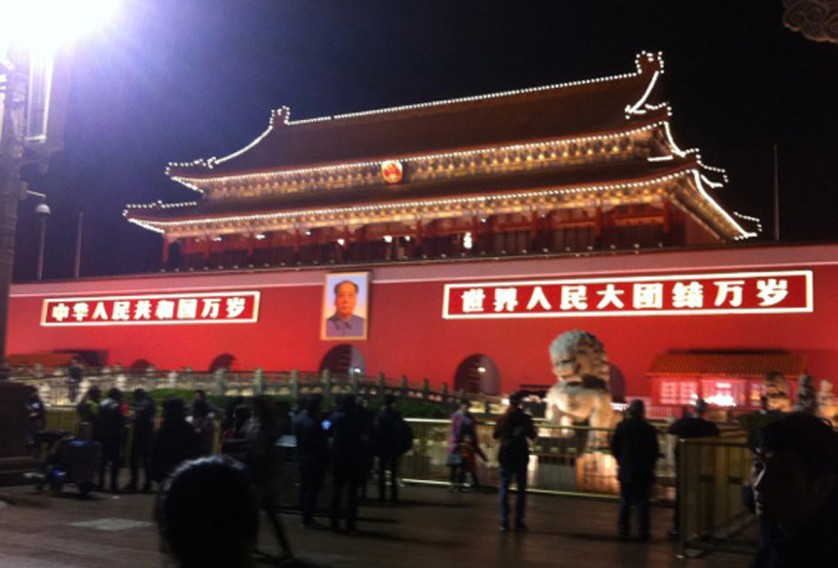Ines Hochgerner
A break from Eurocentrism – Residency in Beijing
The studio is situated in a village on the outskirts of the city; migrant workers and artists live here next to white fox kits in cages and a deer family in the front yard of a sculptor. Litter lies around all over the village, children take a dump in the street and sewer construction works turn a walk to the supermarket into a trekking tour: Many things take an incredibly long time: crossing a street, downloading data from the internet, and during the rush hour you have the choice of being stuck in a taxi in the traffic jam or standing densely packed on the overcrowded underground. As a result, I experienced a small cultural shock that, funnily enough, subsided when a taxi took me to a completely wrong place in the middle of the night and I ended up – all alone, with an empty mobile phone – out in the sticks at four o’clock in the morning, cried at a McDonald’s because I couldn’t communicate even through gestures in Chinese, got home thanks to helpful people with translation apps and then tried to climb over a 3-meter high metal gate I assumed to be locked. This is why I am very grateful right now that there is gentrification since the centre of Beijing is ultimately like any other capital of this world: there is a posh centre, historic sites (at least some that did not fall victim to the Cultural Revolution), hip hutongs, vegan restaurants, Starbucks and street food.
| 1. | Dos & don'ts in this place: |
| Dos: Bicycling! Seriously! It sounds absurd, especially if you have a general idea about traffic and its rules in Beijing, but it really is a good way to get to know the city. You just have to understand that Beijing as a whole is a shared space and that rules are rather considered to be recommendations.And a must: WeChat! is the Chinese variant of WhatsApp or rather a mix of Facebook and WhatsApp but with a much more stylish look and uncountable animated stickers that sooner or later make complete sentences appear overrated. All communication is done in this way – including invitations to exhibitions – and you can even use this app to make payments. But the Chinese government certainly reads all the messages, too.Don’ts: Never leave your home without your mobile phone and charger. Otherwise you might face dire consequences. Especially if you want to go home alone by taxi by night. | |
| 2. | Where to buy great supplies: |
| There are several shops on two floors across the street from the CAFA (20 min by bicycle) and smaller, ground-floor art suppliers across the street from the National Museum in the centre. | |
| 3. | Concerning art at this destination: |
| Only a 20-minute bicycle ride from Feijiacun, there is the 798 Art District that is already listed in each travel guide. There you find all kinds of galleries as well as handicraft and design shops. I find, however, that Caochangdi is more interesting. It is even closer to the village and appears to be somewhat less commercial or rather less touristic. For example, Ai Weiwei designed the building of the Three Shadows Photography Space as well as one of his studios there. There are also art ateliers and galleries. But the Red Brick Museum – only a ten-minute bicycle ride from the village – definitely is a must-go. Its architecture is incredibly exciting and interesting, just like the exhibitions shown there. |
|
| 4. | Around the studio – where I shop, drink my coffee and get the best lunch deal in walking distance: |
| Shopping: There is a big vegetable market in the village and a big supermarket. The vegetable market is so inexpensive that I never spent more than two euro there. On the main road, slightly outside the village, there is an international supermarket that is much cleaner than shopping options in the village and where they always play Michael Jackson.Coffee: Around the corner of Compound 8, there is a small coffee shop and a barista training centre where you can get incredibly good coffee.Lunch specials: As eating is extremely inexpensive in the village in general, there are no lunch specials and you don’t look for them. At the beginning, however, your body will need some time to get used to the stimuli since you often find rotting things near street food in the village. That is not always conducive for your appetite. | |
| 5. | Where I like to spend the evening (dinner, drinks and best sound): |
| In the course of the residency, two favourite hangouts developed among the residents: a small outdoor BBQ across the street from the Shangri La Studios and ‘The Posterplace’ (not its real name, but we simply cannot read the sign) that is decorated with posters from the times of the Cultural Revolution outside the village gate at the main street. The latter restaurant is convenient as the menu is illustrated with photos. The BBQ does not have any photos of the dishes so you simply have to bring along photos of things you would like to eat on your mobile phone.There are several nice hangouts in the centre, e.g. the SOS in a side street off Gulou East Street where you can buy laughing gas at two euro. | |
| 6. | What would have been useful to know before coming here and starting my residency: |
| Hmmm... The question is not so much what I would have liked to know at the start but rather what I should have believed because the preparation for the stay was really good.So, what I should have believed: Toiletries are always adulterated. Shower gels are aggressive and harmful for mucous membranes. They sting. Even when you pay 4euro and the label says Adidas (something I would never buy in Austria). I should have better installed Astrill instead of Express VPN, it seems to work better. Smog unfortunately is sometimes challenging, especially when you like to go jogging once in a while. It is almost impossible to exercise outdoors.What I luckily believed: Fortunately I did not take along my favourite clothes. The washer at the studio is indeed not easy on its contents. At least, it is at odds with H&M clothes. Their seams become undone. That may look quite nice. But not always. |
Website resident: ineshochgerner.com








